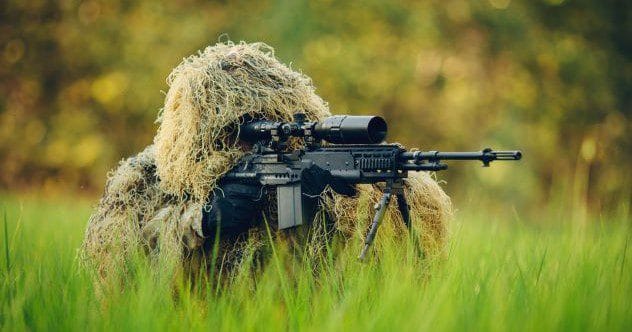Most of us think we know a thing or two about weapons, thanks to movies, video games, and the media. But how much of what we see is actually true? Turns out, a lot of what’s shown on screen is far from reality. Let’s dive into ten common misconceptions about weapons.
War Hammers: Not Like in Video Games
Forget those giant, skull-crushing hammers you see in video games. Real war hammers weren’t about brute force. They were more tactical. Often, they featured a bludgeoning end for stunning opponents and a sharp end for piercing armor. These weapons became popular in the 15th and 16th centuries, especially among higher-ranking cavalry. They were about the size of a sword, far smaller than their video game counterparts, designed to penetrate armor effectively.

Gun Silencers Are Louder Than Movies Portray
Movies make silencers seem like the perfect tool for a quiet assassination. In reality, they’re more accurately called suppressors. They don’t silence a gun; they only reduce the sound. A shotgun with a suppressor still produces a sound comparable to a jackhammer. The primary reason people use suppressors is to protect their hearing, not to sneak around unnoticed. This misconception dates back to the 1930s when the government restricted them, mistakenly believing they would aid criminal activity.

Killing with A Knife Is Harder Than It Sounds
In movies and games, a simple stab often results in instant death. The truth is, killing someone with a knife is much harder. Knives are relatively small, and not always sharp. To inflict a fatal wound, you need to target vital organs, which is challenging on a moving target. It requires considerable strength and precision. Many people have survived multiple stabbings, highlighting just how difficult it is to kill with a knife.
You Can’t Run from an Explosion and Surf the Shockwave
The classic action movie scene of heroes running from an explosion, narrowly escaping the flames, is pure fantasy. Explosions are incredibly fast and powerful. If you’re within the blast radius, it’s too late to outrun it. The shockwave alone is lethal. Forget about surfing the shockwave to safety; if it hits you, survival is highly unlikely.

Ball and Chain Mace Not Used in Serious Capacity
The ball and chain mace is a common sight in movies and video games, often wielded by formidable champions. However, historical evidence suggests it was likely never used in serious combat. While some museum pieces exist, experts believe they were prototypes or ceremonial weapons. There’s little archaeological or textual evidence to support its widespread use in battle.

The Video Game Flamethrower Is Not Really That Effective
Flamethrowers in video games turn you into an unstoppable force, easily clearing groups of enemies. In reality, flamethrowers were primarily used to clear trenches during World War I. Soldiers carrying flamethrowers faced extreme danger, as they were heavy, had low ammo, and became priority targets. While they were psychologically impactful, the flamethrower was never intended as a typical anti-personnel weapon.

Clanging Sword Edges Together Tended to Break Them
The dramatic clanging of swords in movies is a staple of action scenes. However, in reality, repeatedly striking sword edges together would quickly damage or break them. Skilled sword users avoided this, opting to dodge or deflect blows. When contact was unavoidable, they’d use the flat of the blade. Shields were also commonly used to block attacks, preserving the sword’s integrity.
Two Guns at Same Time Only Wastes Ammo
Movies like The Matrix make dual-wielding handguns look incredibly cool. But in reality, it’s impractical. Our vision can only focus on one target at a time. Using two guns either means splitting your focus, resulting in poor aim, or using both on the same target, which is wasteful. Reloading two guns simultaneously is impossible, making it an inefficient tactic.

Police Baton’s Roots in Ancient Martial Arts
The modern police baton has roots in Okinawan martial arts. The design evolved from a handle for a grist mill, which practitioners turned into a weapon when Japanese authorities banned traditional weapons. Adding a handle to the baton made it more versatile for defense and control. Some experts argue that its complexity makes it prone to misuse, potentially causing injury to both the officer and the suspect.

Being a Sniper in Real Life Actually Requires Math
Sniper duels in movies often portray a face-to-face battle of wits. Modern sniping is different. It requires extensive calculations to account for factors like gravity and wind, especially when firing from long distances (often 1,968 feet or more). Snipers typically work in pairs, with one person assisting in calculations and spotting. Unlike video games, snipers aim for center mass rather than headshots, as it increases the likelihood of a successful hit.

From war hammers to sniper tactics, the reality of weapons is often far different from what we see on screen. These misconceptions, fueled by movies and video games, often overlook the practical and historical contexts of these tools.
Which weapon myth surprised you the most? Leave your comment below!












